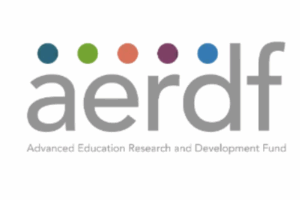Ethics & Policy
AI Ethics: A Network Analysis of the Literature

By: Brian Ball, Alex Cline, David Freeborn, Alice Helliwell, and Kevin Loi-Heng
With support from the Ethics Institute, the Internet Democracy Initiative, and the NULab for Digital Humanities and Computational Social Science, all at Northeastern University.
Introduction
What do we know about the publication landscape for research and scholarship on AI ethics? How are the individual authors, journals, and publishers related to one another in this interdisciplinary ecosystem, and what topics do they discuss? In this post, we undertake a preliminary network analysis of a moderately large corpus of academic papers in the field, and report some initial findings.
As the present project involves the techniques of the digital humanities, we begin by describing our dataset – a collection of several thousand documents available on JSTOR. We then give some preliminary (e.g. temporal and statistical) analysis of our data, before exploring a series of networks – of authors, publishers, and keywords – made visible within it. The result, we hope, gives an initial impression of the AI ethics research community over the years.
The Dataset
Our dataset comprises metadata from some 7076 documents from JSTOR, all wholly or partly in English, found with the search ‘artificial intelligence AND ethics’ through the (now defunct) Constellate platform.[1] It is, of course, far from obvious that this search provides the most appropriate method for selecting documents from the JSTOR repository: for the category of AI ethics may not be (purely) conjunctive; ‘AI’ may modify ‘ethics’ in the phrase ‘AI ethics’ in something like the way that ‘giant’ modifies ‘shrimp’ in the phrase ‘giant shrimp’.[2] Thus, in particular, it is possible that our search is too inclusive: a paper that is about the use of AI in medicine, for example, may also have some material on (e.g. research) ethics, without being clearly about the ethics of AI use in medicine; or an ethics overview paper might mention AI, and yet not be an AI ethics paper properly so-called. Still, we feel it is better for our corpus to be too encompassing at this stage, rather than too narrow – and a search using ‘AND’ is clearly more appropriate than one using ‘OR’!
It is also worth noting that our corpus is neither unrepresentatively small[3] (like, say, a case study of the 100 or so papers taught across a course or two on the topic[4]), nor unwieldy and huge (such as all of the papers in e.g. ArXiv might be). Thus, while it is perhaps not exhaustively indicative of the AI ethics literature as a whole, we do hope to be able to learn some interesting things about the research community and publishing landscape for AI ethics by examining it.
Preliminary Analysis
We did not explicitly restrict attention to recent years in choosing our dataset – and yet 1961 is the earliest recorded publication year in our corpus. Moreover, amongst years with at least one publication, there were an average of 114 publications per year, with a minimum of 1, a maximum of 674, and a standard deviation of 135. There were fewer than 24 papers in a quarter of years, at least 91 papers in half the years, and 119 or more in a quarter of years. This said, some years had no publications – which obviously affects these statistics.
There is a spike in publications 1988, with 152 documents – a number that is not passed until 2016.[5] There was an increase in the number of documents from 2016 (194 docs) to 2020 (674). The fact that there are fewer papers after that (in the years 2021-2024) no doubt reflects JSTOR’s archiving (and copyright agreements) rather than a drop off in interest in AI ethics within the community – and there are still more than 300 per year in those most recent years.

The literature we are examining is varied in format. Document types in our dataset include: ‘book’ (578 items); ‘research_report’ (827 items); ‘article’ (5045 items); ‘chapter’ (514 items); ‘document’ (103 items); and ‘newspaper’ (9). Of these, 341 documents have the title ‘Front Matter’. A further 61 are called either ‘Review’ (2) or ‘Review Article’ (59). This seems to us to be a fairly representative collection of research texts.[6]
There are some 596 unique ‘publishers’. Of these 25% have published just one document, 50% have published 3 or fewer, and 75% have published 9 or fewer. Only 9 publishers have published more than 100 documents: together they account for 1780 documents (just over 25%). The top 25 have published 60 or more documents.
There are 1395 unique journals – or at least, items of which documents are parts. (The metadata field under discussion is called ‘isPartOf’ – of course, this comprises books of which chapters are parts, as well as journals, and perhaps other items as well.) Of these 25% contain just one document from the dataset, 50% contain 2 or fewer, and 75% contain 3 or fewer. The top 100 contain 11 or more documents. The top 50 contain 21 or more. 12 contain 50 or more. 3 contain 100 or more. Synthese tops the list with 230 articles in our dataset.

5265 of the documents have something in the ‘creator’ (i.e. author) field. (This field is blank in the remaining items in our corpus.) But some of these contain multiple authors (that is, they are co-authored documents). Our dataset contains some 9297 unique authors/creators. Only 32 of these have authored 10 or more documents in the collection, however.[7] For the sake of anonymity, we will not comment in detail on authorship in what follows – though we will use the ‘creator’ field to build networks representing the publication landscape (see below).
Of our 7076 documents, all but 60 include ‘keyphrases’: and indeed, our dataset contains 30,836 unique keywords/phrases. On average a keyphrase occurs in two and a quarter documents. Over 75% of keyphrases occur in just a single document. Again, we will explore these keyphrases in our network analysis below – but it is worth noting some basic descriptive facts first. The most used keyphrase occurs in 667 documents: it is the word ‘philosophy’. The phrase ‘artificial intelligence’ is the third most frequently occurring keyphrase, with 567 occurrences. There are 5 keyphrases that occur in at least 500 documents: philosophy (667), university (582), artificial intelligence (567), science (539), technology (509). Some 39 occur in at least 100 documents, 12 in 200 or more, and 98 occur in 49 or more.
Networks
The above analysis is of interest: it tells us about the various individuals and other entities that have a presence in the AI ethics literature (as represented in our dataset); but it does not say much, if anything, about the relationships between those entities (as captured by the JSTOR metadata at our disposal). In what follows we conduct some network-oriented analysis in an attempt to reveal the publishing landscape and research ecosystem in AI ethics (in our data).
It is fairly common, when constructing academic publishing networks, to focus on either co-authorship (of documents) or citation (of one document by another) to establish links between individuals (authors) and/or entities (documents). But joint authorship is not that common within fields like philosophy (which, recall, was the most common keyword in our corpus); and that sociological fact is reflected in our data, where more than three quarters of the documents list a single ‘creator’. Accordingly, any co-authorship networks we might construct would be highly disconnected, revealing very little structure within the AI ethics research community. Citation networks might be more illuminating: but our JSTOR corpus metadata does not include information about citations; and so, producing such network representations about our corpus would require (a) investigating a different dataset (the full texts of the papers in question), and (b) using radically different computational techniques (e.g. named entity recognition). This is not something that we will undertake here.
What our (meta)data does (directly) contain is information that links documents to their creators, the journals (or books) they were published in, the publishers of those (books or) journals, the keywords used to describe them, etc.; and this information can in turn be used to induce relations between those items (as mediated by the documents).
Author Networks
For example, here is an image (produced using Gephi) of the (unlabelled) authors represented in our dataset, as linked by the existence of a journal, book, or other collection, containing as parts documents written by each. (This will include cases in which it is the same document that is co-authored by the two parties in question.) Darker nodes (and edges emanating from them) indicate authors with greater ‘betweenness centrality’ – that is, they are authors who lie on more of the shortest paths between other authors (which in the present context means that, if one wishes to progress from a document written by one of those authors to a document written by another, via works containing documents with authors in common, one is likely to progress via works by these darkened authors).

In the next image, by contrast, we see the same network (of authors connected by shared journals/collections), but with darker colour indicating higher degree. That is to say, here the darker nodes are those who are connected to more authors (by being included in the same publication): they are, in some sense, the most connected members of the community; but their connections may not be the most essential ones within the community (as the connections of the betweenness central nodes are).

Publisher Networks
Next, we see a (labelled) network of the publishers in our dataset, linked by the existence of (one or more) authors who have had works published by both. Here we can see that the network is disconnected, meaning that some collections of publishers share no authors with other collections of publishers. In some sense, then, the AI ethics research ecosystem (of the past 60+ years, as represented in JSTOR data) comprises several distinct subcommunities. Colour here indicates modularity – another sort of (algorithmically detected) sub-community, though as can be readily seen, not one that is so discrete. (Indeed, the algorithm is stochastic, and sometimes yields different module assignments if run on the same network.) As can also be seen, Springer is (in some sense) the most influential publisher of AI ethics research.

Keyword Networks
Finally, in the image below, we can see a network comprising the 13k+ keywords used in the metadata for our corpus of papers, linked by (one or more) authors who use it to describe their work. Obviously labels are not visible for all of these keywords – but the larger words are readily discernible, with size indicating eigenvector centrality (roughly, being more linked to other keywords that are themselves also more heavily linked). One thing that emerges immediately is that ‘artificial intelligence’ is the most prominent keyword in this network – even though ‘philosophy’ is more commonly used, as we saw above. This tells us that ‘artificial intelligence’ is used in our dataset by authors who also use other widely used keywords; whereas ‘philosophy’ is perhaps slightly more likely to be used alongside words that are somewhat more idiosyncratic? Or perhaps this just tells us that the field of AI ethics is interdisciplinary – so that all authors in the field are likely to use this word alongside others, whereas only a subset of them are likely to use ‘philosophy’ in conjunction with whatever else they are discussing.

Conclusion
Clearly, we have only begun to explore this dataset of documents from the AI ethics literature available on JSTOR – there remains plenty of more in depth analysis to be done with this collection of thousands of publications totalling over 150m words – but already we can see how the decision to represent the research ecosystem in this area using network techniques can prove illuminating. Communities of researchers are held together by relational ties – e.g. to publications and publishers, and thematically by keywords – and through graphical representation we can begin to (literally) see the shapes these communities take. This in turn can guide further investigations, suggesting questions for exploration – which we look forward to pursuing in due course!
[1] See here: https://labs.jstor.org/projects/text-mining/. Constellate is also on GitHub – see e.g. https://github.com/ithaka/constellate-notebooks/blob/master/Exploring-metadata/exploring-metadata.ipynb
[2] Though hopefully not in the way ‘counterfeit’ modifies ‘money’. Counterfeit money is not really money – but with any luck, AI ethics papers are ethics papers!
[3] Indeed, the total word count in our corpus is 159,077,064 words (i.e. 159m+ words)!
[4] See e.g. https://cssh.northeastern.edu/nulab/analysing-ai-ethics-using-ai/.
[5] Perhaps it is better to say that there is a fall in AI ethics publications after 1988 (until the late 2010s). This corresponds roughly to the so-called (second) AI winter, which was characterised by decreased optimism around the prospects for AI technology, and cuts in funding to AI-related research in the USA, Japan and elsewhere. By way of (admittedly rough) corroboration, the pattern for “artificial intelligence” in Google Ngram is very similar – see here. In short, the decline in publications in the late 1980s seems to be primarily in AI, not ethics.
[6] This said, our metadata on the documents includes a ‘docSubType’ field. Here we find the following: book (578); research report (162); chapter (524); research article (2944); mp research report (286); miscellaneous (1805); index (47); book review (297); references (109); introduction (63); front matter (122); table of contents (9); notes (48); appendix (17); back matter (24); correction (4); other (11); review article (1); preface (4); glossary (1); forward (0); review essay (8); and news (9). So there are perhaps a few more reviews, short pieces, and other (what we might call) ‘atypical’ documents in our corpus than the above ‘docType’ analysis suggests – but not so as to seriously affect our findings.
[7] The World Health Organization (WHO), for example, is the second most common ‘creator’, with 41 distinct documents.
Ethics & Policy
‘Gehraiyaan’ director generates new AI-based car chase as filmmakers divided on ethics- The Week

The arrival of artificial intelligence in cinema has not just opened new creative frontiers, but it has also unsettled the foundations of how stories are conceived, shaped, and shared.
From generating hyper-realistic sequences that once demanded months of location scouting, elaborate sets, and sprawling crews, to assisting in script revisions within hours, AI is rapidly altering the grammar of filmmaking.
In one recent experiment, filmmaker Shakun Batra worked with a team of collaborators to explore how AI could function in this area. The project, structured as a series of short visual pieces across genres—from action and drama to sci-fi and comedy—was designed to test whether advanced tools like video-generation and AI-assisted editing could help filmmakers imagine scenes that were previously limited by budget or logistics.
Batra, known for his intimate yet layered narratives through his previous work, such as Gehraiyaan, which Deepika Padukone and Siddhant Chaturvedi helmed, recently created a whole car chase sequence entirely through AI.
“We were able to explore scale, energy, and movement in a way that would have required months of planning and a massive crew otherwise,” he says. “But what stayed with me wasn’t just the visual achievement—it was the shift in process. We were working more like composers or designers—quickly iterating ideas, testing pace and mood in near real-time.”
The first experiment in the series, a high-octane chase titled The Getaway Car, gave him the chance to try something he had never attempted before. “For many independent artists, it can be challenging to produce such ambitious, dynamic concepts due to logistical and budget constraints,” he notes. “This is where technology can step in to open new avenues for visualising and iterating complex ideas.
Rough edges and all, it was one of the most freeing creative experiences I’ve had. It’s not perfect, but it’s a glimpse of what’s possible when curiosity leads the way,” Batra tells THE WEEK in an interview.
Script writer and conceptualiser, Shruti Srivastava, agrees. “It’s a complete burst of ideas and concepts that AI leads to, which makes it so exciting to work with. As filmmakers, I think we are just about starting on exploring the many possibilities that we will see in the time to come,” she says.
For Batra, the promise of AI lies not only in efficiency but in its potential to democratise the medium. “As the tools become more accessible, I feel like those of us with experience need to step into more of a guiding role,” he notes. “Access is step one. But making something meaningful still takes intent, and perhaps part of our responsibility is helping others develop that sense of intent in this new landscape.”
Filmmakers of today view AI less as a threat to artistic integrity and more as a way to rethink the creative process. If used right, AI doesn’t reduce creativity; it liberates it. While the tools generate visuals, it’s the filmmaker’s choices that give them meaning. “In a world of endless generation, the artist’s role in curating what matters becomes even more important. Even a student in a small town, with a story and a vision, can now produce sequences that used to require studio-scale resources,” adds Srivastava.
AI’s presence in the industry has also forced conversations around authorship, ethics, and credit. If a director uses an AI tool trained on thousands of hours of another artist’s work, who owns the final image? Batra doesn’t pretend to have definitive answers. “These are big questions—who gets credit, who gets paid, what does authorship even mean now? If someone’s voice or visual style helped train a model, shouldn’t they be acknowledged? We need frameworks that are transparent and fair.”
Looking ahead, industry experts believe that the most urgent debate is not technical but philosophical. “Just because we can make things faster or bigger doesn’t mean we should stop asking: what are we really trying to say? And who gets to say it?” says Nachiket Nanda, who’s learning filmmaking with AI in a mass communication college in Mumbai.
Interestingly, AI can analyse audience preferences, simulate locations, or even generate first drafts of scripts. The challenge then for the industry will not just be mastering the technology but mastering how to live with it. Or, as Batra puts it, “We need to make sure we’re not just making more movies, but making movies that still matter.”
Ethics & Policy
Digging Deeper | Sarah Barnbrook talks AI ethics

Podcasts
Digging Deeper | Giving the gift of life
On the latest episode of Digging Deeper, Shepparton News journalist Bree Harding speaks to Dean Gladigau about his wife, Karen, who donated her organs after she died of motor neurone disease last year.
By Bree Harding
Ethics & Policy
Investing in AI Ethics and UBI as the Workforce Transforms

The world is on the brink of a seismic shift in how we define work, wealth, and well-being. Artificial intelligence is accelerating automation at a pace that outstrips even the most optimistic projections, displacing jobs in sectors from customer service to manufacturing. Yet, amid this disruption, a new economic paradigm is emerging: universal basic income (UBI) and AI ethics frameworks. For investors, this isn’t just a societal debate—it’s a goldmine of opportunity. The companies and organizations leading this transition are not only shaping the future but also building the infrastructure to sustain it. Let’s break it down.
The UBI Revolution: Who’s Funding the Future?
Universal basic income is no longer a fringe idea. It’s a tested, scalable solution to the existential threat of job displacement. OpenResearch, a nonprofit backed by Sam Altman (OpenAI’s CEO), has been at the forefront of UBI experimentation. Since 2020, its pilot program has provided $1,000 monthly payments to 1,000 low-income individuals in Illinois and Texas. The results? Recipients use the cash to stabilize their lives, invest in education, and even start businesses. Crucially, the program hasn’t discouraged work—it’s empowered people to pursue opportunities they previously couldn’t afford.
Altman’s bet on UBI isn’t just altruistic—it’s strategic. As AI reshapes the economy, OpenAI is positioning itself as a thought leader in the ethical deployment of technology. For investors, this means OpenAI (and its parent company, Microsoft) isn’t just a tech play—it’s a gateway to the UBI ecosystem. Microsoft’s recent investments in AI ethics tools and its partnership with UNESCO’s Women4Ethical AI initiative further cement its role in this space.
AI Ethics: The New Compliance Gold Standard
The rise of AI isn’t just about efficiency—it’s about accountability. The EU AI Act, now in effect, mandates strict transparency, bias detection, and human oversight for high-risk systems. Companies that ignore these rules will face penalties; those that lead the charge will dominate.
Take Tesla, for example. Elon Musk, a vocal UBI advocate, has long warned about the need for a safety net in an AI-driven world. Tesla’s recent pivot to AI-powered manufacturing and its investments in humanoid robots (Optimus) position it as a key player in the automation economy. But Musk’s vision isn’t just about robots—it’s about redefining labor. Investors should watch Tesla’s stock closely as it navigates the intersection of AI ethics and UBI advocacy.
Meanwhile, United Way Bay Area and Sacramento’s Creative Growth Fellowship are proving that UBI isn’t just for survival—it’s a catalyst for creativity and entrepreneurship. These programs, funded by a mix of philanthropy and corporate partnerships, highlight the growing role of private capital in social equity. For investors, this means opportunities in impact-driven tech and infrastructure.
The Ethical Edge: Why This Matters for Your Portfolio
The companies leading the UBI and AI ethics charge are not just avoiding regulatory pitfalls—they’re creating new markets. Consider the $2 trillion U.S. Sovereign Wealth Fund, a government-corporate hybrid designed to fund infrastructure, AI, and potentially UBI. This fund, modeled after Norway’s success, could become a long-term revenue stream for guaranteed income programs. Investors who align with this vision—through sovereign wealth fund-related stocks or AI-focused ETFs—stand to benefit as the UBI model scales.
But don’t ignore the human angle. The Women4Ethical AI platform, backed by UNESCO, is addressing gender bias in AI development. Companies that prioritize diversity in their AI teams (like Microsoft and IBM) are not only doing the right thing—they’re future-proofing their products.
Risks and Realities: Is UBI a Panacea?
Critics argue UBI alone can’t solve systemic inequality. A 2023 OpenResearch study found that while UBI covers basic needs, it doesn’t significantly boost employment quality or health outcomes. But this misses the point: UBI is a tool, not a silver bullet. It’s part of a broader strategy that includes retraining, healthcare access, and ethical AI governance.
For investors, the key is to diversify. Don’t bet everything on a single UBI pilot. Instead, look at the ecosystem: tech companies (Microsoft, Tesla), nonprofit innovators (OpenResearch), and policy-driven funds (U.S. Sovereign Wealth Fund).
The Bottom Line: Positioning for the AI Era
The future of work is here, and it’s being rewritten by AI. The winners in this new era will be those who embrace UBI and ethics as both moral imperatives and business strategies. For investors, this means doubling down on companies that are not just automating jobs but redefining them.
Action Steps:
1. Buy into the AI ethics leaders: Microsoft, Tesla, and IBM are building the frameworks that will govern the next decade of tech.
2. Support UBI pioneers: Consider impact funds or ETFs that include OpenResearch-backed initiatives or sovereign wealth fund-linked stocks.
3. Diversify with policy plays: The U.S. Sovereign Wealth Fund and state-level UBI programs are creating new asset classes.
The market is always ahead of the curve, and right now, it’s betting big on a future where AI and UBI coexist. Don’t be left behind—position your portfolio for the next industrial revolution.
-

 Events & Conferences3 months ago
Events & Conferences3 months agoJourney to 1000 models: Scaling Instagram’s recommendation system
-

 Funding & Business1 month ago
Funding & Business1 month agoKayak and Expedia race to build AI travel agents that turn social posts into itineraries
-

 Jobs & Careers1 month ago
Jobs & Careers1 month agoMumbai-based Perplexity Alternative Has 60k+ Users Without Funding
-

 Education1 month ago
Education1 month agoVEX Robotics launches AI-powered classroom robotics system
-

 Education1 month ago
Education1 month agoAERDF highlights the latest PreK-12 discoveries and inventions
-

 Mergers & Acquisitions1 month ago
Mergers & Acquisitions1 month agoDonald Trump suggests US government review subsidies to Elon Musk’s companies
-

 Jobs & Careers1 month ago
Jobs & Careers1 month agoAstrophel Aerospace Raises ₹6.84 Crore to Build Reusable Launch Vehicle
-

 Podcasts & Talks1 month ago
Podcasts & Talks1 month agoHappy 4th of July! 🎆 Made with Veo 3 in Gemini
-

 Podcasts & Talks1 month ago
Podcasts & Talks1 month agoOpenAI 🤝 @teamganassi
-

 Jobs & Careers1 month ago
Jobs & Careers1 month agoTelangana Launches TGDeX—India’s First State‑Led AI Public Infrastructure

